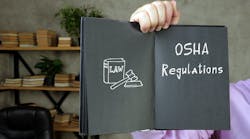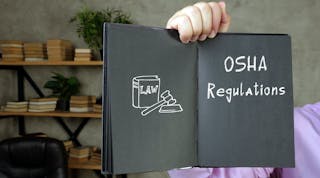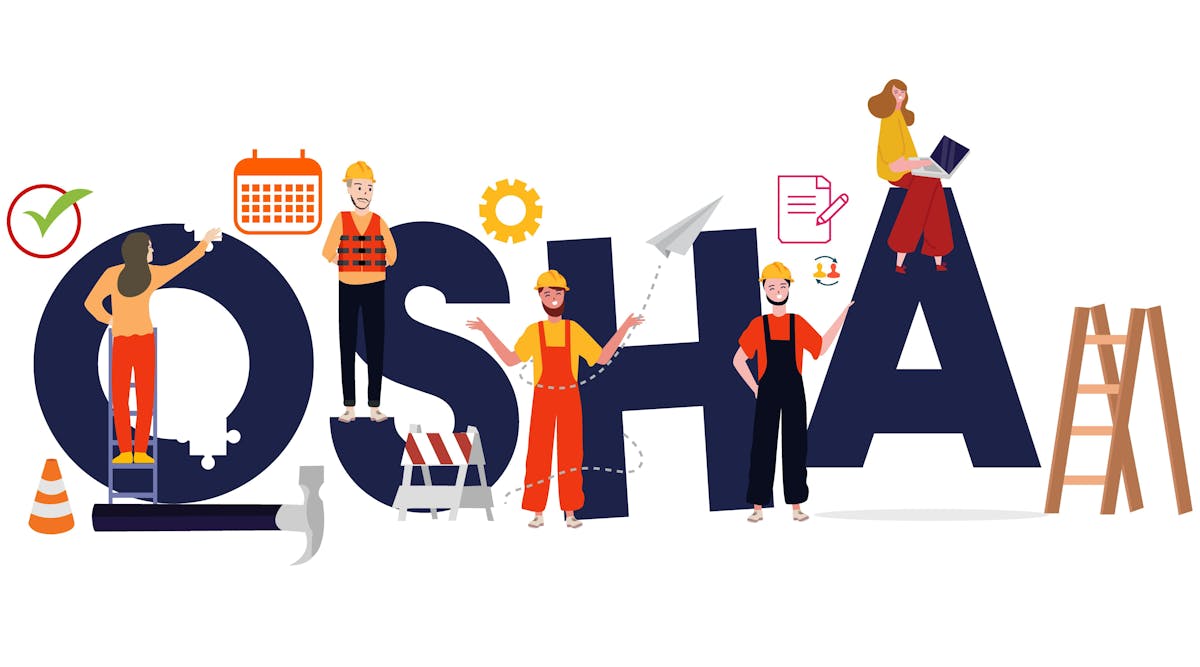After many years of mild hurricane seasons, 2020 has proven to be extraordinarily active, resulting in widespread damage, deaths and injuries. There are steps employers can and should take to mitigate the consequences of these storms, as well as other natural and manmade disasters that can impact business operations any time of the year.
In the wake of Hurricane Laura, attorneys at the law firm of Seyfarth Shaw offer a primer on how employers should prepare for natural disasters and other emergencies, what actions they should take while one is happening, and how they should clean up and resume business once it has passed.
Under the Occupational Safety and Health Standards that are part of regulations issued by the Occupational Safety and Health Administration (OSHA), all workplaces with more than 10 employees are required to develop a written Emergency Action Plan (EAP) to identify and coordinate necessary employer and employee actions during an emergency.
At a minimum, the EAP must include these elements:
● Means of reporting emergencies (fires, floods, etc.).
● Evacuation procedures and assigned exit routes.
● Procedures to account for all employees following an evacuation.
● Procedures to be followed by employees who must remain behind to attend to critical plant operations before evacuating.
● Rescue and medical duties for employees who are assigned and trained to perform them.
● Names or job titles of people who can be contacted for more information about the plan.
In addition to these required elements, it is recommended that employers also consider including the following in the EAP:
● Procedures for protecting employees from COVID-19 during the emergency.
● The location of the nearest hospital or emergency medical center.
● The type of alarm system used to notify employees of an emergency.
● Procedures for protecting information including procedures for storing or maintaining critical documents and records.
● The location and permissible uses of protective equipment such as portable defibrillators, first aid kits, dust masks and fire extinguishers.
● The location of TVs or radios for obtaining additional information during a disaster.
“Ensuring the development of an effective EAP also requires the employer to train employees to understand their roles and responsibilities under the plan,” the Seyfarth Shaw attorneys stress. “When conducting this training, the employer must address literacy, language and cultural barriers to ensure that the training is effective. Employers also must document the training.”
They also note that OSHA has posted links and recommendations on its website to help employers prepare for hurricanes. The website includes tips about how to create evacuation plans and assemble emergency supply kits. The Environmental Protection Agency also has provided tips related to hurricane preparedness on its website.
“Should I Stay or Go?”
The first question most people ask during an emergency is “should I stay or should I go?” the attorneys say. “Communication during an emergency is critical to maintain organization and prevent panic and injuries. For example, not all emergencies require an evacuation of the workplace. In some cases, such as flooding, storms, or the release of biological or chemical agents, staying indoors is safer for employees.”
Employers can guide employees to follow the appropriate course of action by having an alarm system that emits a different signal for “evacuate” emergencies from the one for “stay put” emergencies, they suggest. Alternatively, the alarm system could be programmed to give specific verbal instructions following the initial alert.
“Employers must consider the needs of disabled employees (for example, those who are hearing or visually impaired) in selecting any alarm system,” the attorneys say.
They also urge employers to establish an effective means for communicating with employees about whether to evacuate, how to get information about the emergency, what areas of the building to avoid, how and when it is safe to return to the work area, and when it is acceptable to contact family members and loved ones.
Once the proverbial dust settles after an emergency, hazards to employees can still remain, the attorneys observe. For example, downed power lines in a flooded parking lot can injure or kill employees leaving the building after the storm passes. Hazards are even greater for employees who are tasked with cleaning up after an emergency.
In 2018, an OSHA regional administrator stated that “risks can be minimized with knowledge, safe work practices and personal protective equipment. Cleanup work after the storm may involve hazards related to restoring electricity and communications, debris cleanup, roof repair, and tree trimming. Only those with the proper training, equipment and experience should conduct cleanup activities.”
The Seyfarth Shaw attorneys add that employees actually performing clean-up work after a flood, storm, earthquake, or other disaster may be exposed to other hazards, including exposure to COVID-19 hazards and exposure to hazardous materials, such as asbestos, mold, lead, or dangerous chemicals.
Other potential hazards include downed power lines and trees; heat illness, including the complications of wearing face masks; confined spaces; blood borne diseases or other contagions; mosquito borne diseases; and structural destabilization.
OSHA on Recovery Work
OSHA’s website provides a Hurricane eMatrix for hurricane response and recovery work, outlining the most commonly performed duties during hurricane response and recovery work, and the hazards that employees could face. OSHA has developed specific standards to address many of these kinds of hazards.
OSHA’s Hazardous Waste Operations and Emergency Response standard applies to employees who are performing clean-ups of hazardous waste or other hazardous materials. The asbestos and lead standards require employers to evaluate the level or exposure to employees, provide appropriate protective equipment, and, in some cases, conduct regular monitoring of air quality in the work area.
In addition to these specific standards, other more general requirements will also come into play, the attorneys remind employers. For example, OSHA’s welding and cutting lockout/tagout, confined space entry, and fall protection programs may come into play, even if no OSHA standard specifically addresses the specific type of clean-up activity taking place.
Finally—as always is the case—OSHA’s General Duty Clause requires employers to provide a workplace free from recognized hazards, the attorneys remind businesses.
“Accordingly, even if no OSHA standard applies to a particular activity or hazard, employers may still face citation liability if the hazard is reasonably likely to cause serious injury or death and there is a feasible means of abatement to correct the hazard,” they explain. “Before allowing employees to commence any kind of clean-up work then, the employer must conduct a job hazard analysis (JHA) to identify and address potential hazards.”
They also emphasize that employers who hire outside contractors to clean up after a disaster must be aware of their continuing obligations for worker safety. OSHA’s “multi-employer worksite” doctrine allows the agency to issue citations not only to the employer whose employees are actually performing the clean-up work, but also to other employers who control the means and methods of work of the employees.
As a result, employers may be liable for the safety precautions provided to employees who are brought onto their worksites following a natural disaster.
To sum up in a few words, the Seyfarth Shaw attorneys recommend that employers check off the following steps in order to prepare adequately for natural disasters and other emergencies:
● Develop an EAP that covers a wide variety of potential emergencies and gives employees clear guidance on what to do in each scenario.
● Be cognizant of hazards employees may face even after the immediate danger has passed.
● Train employees in evacuation plans and other emergency response procedures.
● Conduct a job hazard analysis and review applicable OSHA standards before assigning any employees to perform clean-up work.
● Evaluate the safety record of any independent contractor hired to perform clean-up work, including investigating the contractor’s worker’s compensation history, its OSHA logs, and its history of citations from OSHA.
“It is imperative that employers develop and implement organized and clearly communicated procedures for responding to a disaster,” the attorneys declare. “A well-planned and executed emergency response program will help prevent panic, thereby minimizing employee injuries and damage to property.”










































































